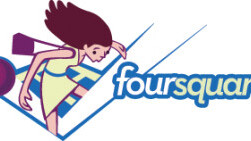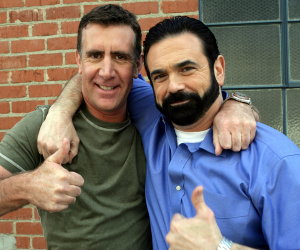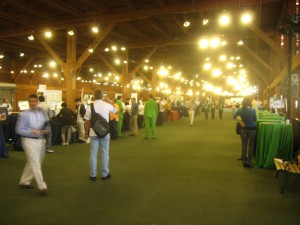
 I can’t really qualify myself as “new” to the business of entrepreneurship. I’ve been in and around different aspects of it for the past 5 years. However, I can say that I’m new to being on the receiving end of pitches. This past week, I heard some hits and misses that were equally as good and bad in their presentation, so it led me to figure out what made the good ones good and I wanted to share that with you.
I can’t really qualify myself as “new” to the business of entrepreneurship. I’ve been in and around different aspects of it for the past 5 years. However, I can say that I’m new to being on the receiving end of pitches. This past week, I heard some hits and misses that were equally as good and bad in their presentation, so it led me to figure out what made the good ones good and I wanted to share that with you.
The Diva
When Melanie Moore from ToVieFor took the stage, there was an immediate air about her and her product. She strutted up confidently, nailed her 6-minute presentation and even handled a bobble with ultimate class. The entire persona fit her site exactly and it made the whole presentation actually engaging, instead of just “another”.
Then the presentation ended and the Q&A began. That’s where Moore lost me. Though she answered the questions very well and her “true” persona was as lovely as you could have ever hoped, the act was gone. It was like someone pulled back the curtain on the Wizard and the mystery went away.
I say that to bring this point – whomever you are, be that person the entire time you’re on display. Moore could have been equally as engaging simply being herself during her presentation, but she chose to add a flair to it. In doing so, it brought her product into a different light that truly worked for what she was selling. But when that flair changed, I had to do a double-take and it broke the zone that I was in while paying attention to what she was pitching.
Being Obama
 Love him or hate him (or if you’re indifferent but knowledgeable), Barack Obama is one of the world’s great extemporaneous speakers. While that quality is certainly aided by an inborn talent, I can almost assure you that Obama has taken some lessons in speaking and communication to capitalize on it.
Love him or hate him (or if you’re indifferent but knowledgeable), Barack Obama is one of the world’s great extemporaneous speakers. While that quality is certainly aided by an inborn talent, I can almost assure you that Obama has taken some lessons in speaking and communication to capitalize on it.
When you’re pitching your product, you don’t always have the luxury of being a “born speaker”. Regardless of whether you are or not, it is still in your best interest to take some time and invest that into yourself. Do that by signing up for a public speaking class, whether that’s from a local college or even a private session.
You have six minutes, generally, for your longest pitch. Your shorter ones might only be 30-second snippets but should be equally as well delivered. Make sure that the six minutes that you’re in the spotlight feels like less than that.
Transactions
Let’s face it, you’re on stage looking for attention and/or financing. These are very transactional things. You don’t have time to focus on building a relationship with me so you’re best served to make it fast. You have about 15 seconds to engage me while I’m sitting or standing there before my mind will start to wander. Here’s how you should spend that time:
- 5 seconds – Your name, your product’s name
- 10 seconds – The problem it solves
After that, look me in the eye and see my reaction. Am I nodding? Then keep going. You’re doing great. If I’m not nodding, then you haven’t convinced me so you you had best start figuring out a hot button. Barring that, just give me your card and invite me to contact you. It may or may not happen, but it’s certainly worth a shot. If your product is a 6 out of 10 on my scale, it might get relegated to my “slow news day” folder, but I’ll still eventually write about it.
Paint the Picture
 Depending on where you’re presenting you’re likely to be in in limited space with a lot of noise. I can’t count the number of times I heard “huh?” this past week. In order to overcome the noise and bring people into your space, you need to set up something that’s visually appealing. Catch the interest of passing media and investors by doing something that’s different.
Depending on where you’re presenting you’re likely to be in in limited space with a lot of noise. I can’t count the number of times I heard “huh?” this past week. In order to overcome the noise and bring people into your space, you need to set up something that’s visually appealing. Catch the interest of passing media and investors by doing something that’s different.
One prime example that I saw this week was for LARK Up. Instead of just having a table with a laptop and some cards, LARK (a next-generation alarm clock that will be huge, so look for it) had pillows and signs saying “just let her sleep” that would fill what was otherwise-empty space. They caught my attention, and had a great pitch to top it off.
Pulling Together
What I most realized, this week, was that I love startups. I love seeing the passion with them and being on the “presented” end for once. There are so many good products, however, that never see the light of day because of poor pitches and bad presentation. Don’t be the next one of those.
We could literally go on for hours talking about the different ways that you can aid in your presentation, and I’m happy to do that in the comments. So talk away and let’s make your next pitch the best one you’ve ever had.
Get the TNW newsletter
Get the most important tech news in your inbox each week.




